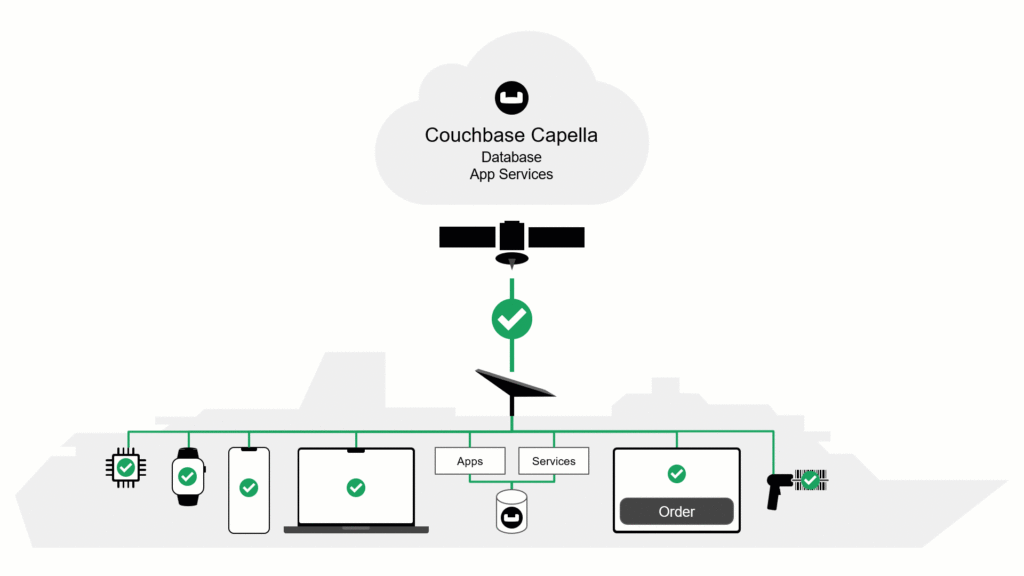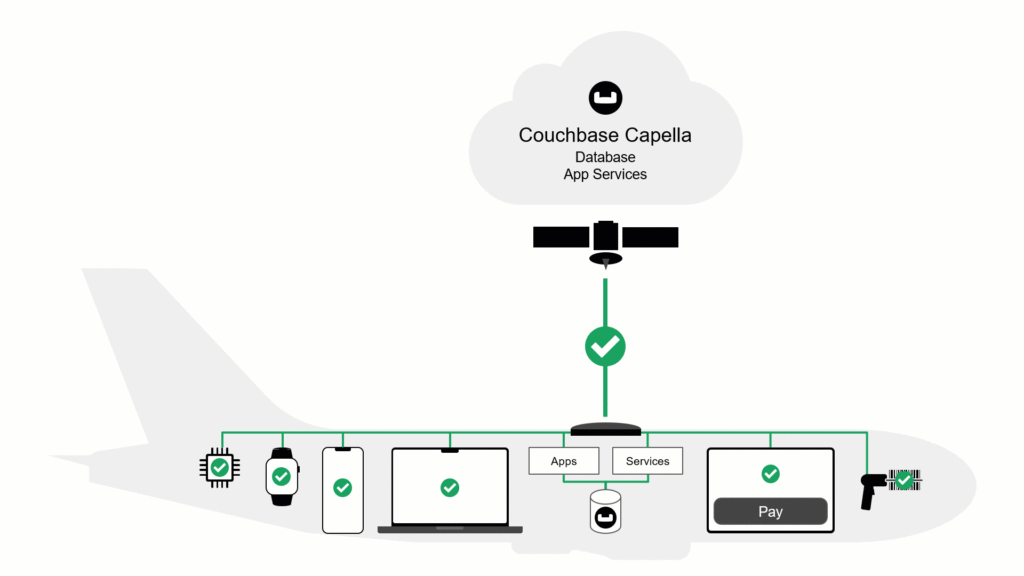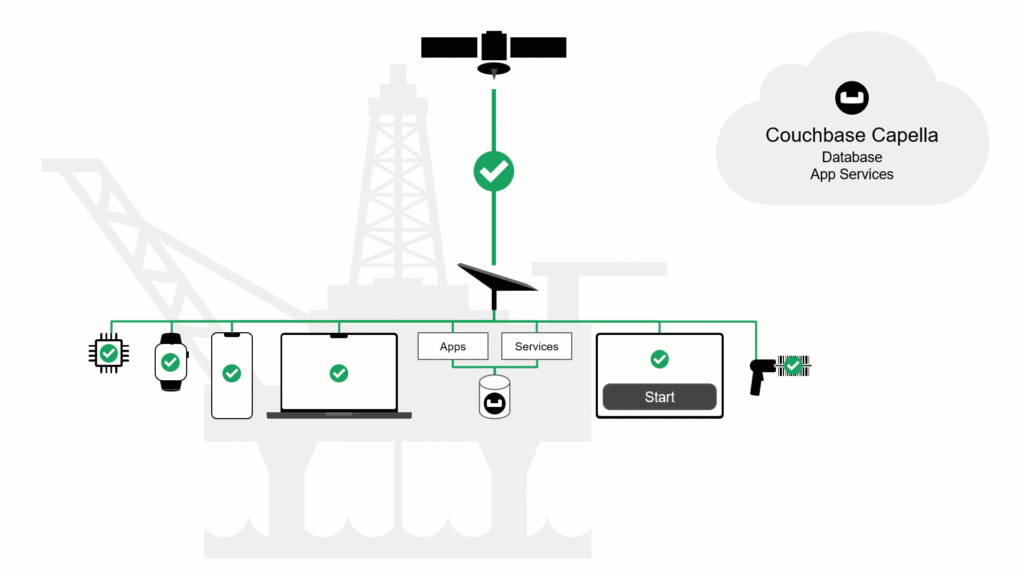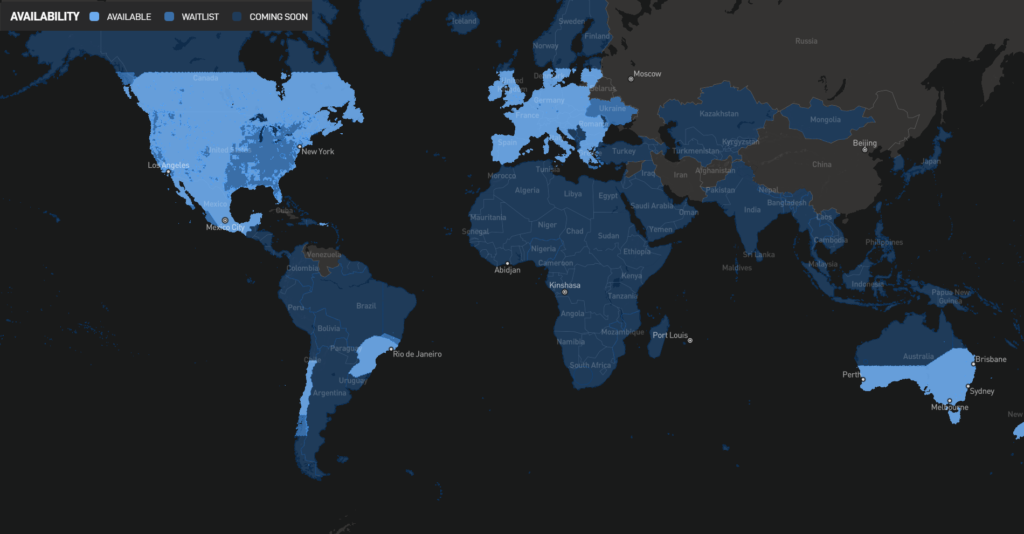If data is the lifeblood of enterprise applications, networks are the arteries.
Networks are so vital because they enable business, human and mission-critical processes by connecting organizations with customers, employees and partners, increasing efficiency, powering automation, driving engagement and accelerating productivity. Networks are the glue that knit modern applications together.
But apps can only be as available and fast as the network that underpins them. Achieving high levels of reliability and speed are keys to success. Network disruptions and slowness are a daily reality that lead to downtime with costly and sometimes disastrous results. And believe it or not, there is still a large part of the globe without any network access at all, not just in remote locations, but even within major metropolitan areas. As such, networks have been evolving to increase coverage and speeds — from wired, to wireless, to 5G and now to emerging next-gen celestial networks like Starlink.
Dancing with the stars
Starlink is the newest innovation from SpaceX. It’s a satellite network that holds the promise of bringing fast, reliable internet to places without it before. From Starlink.com:
“Starlink is ideally suited for areas where connectivity has been unreliable or completely unavailable. People across the globe are using Starlink to gain access to education, health services and even communications support during natural disasters.”
Starlink is being hailed as the next evolution in broadband internet. But a satellite network is nothing new, HughesNet and Viasat have been offering satellite internet for many years. So how is Starlink different? Well, for starters, it offers much better coverage and much lower latency than traditional satellite networks:
Global coverage
-
- Standard satellite internet is powered by just a few giant satellites in geostationary orbit, which remain in a fixed position above the Equator matching the Earth’s rotation. Because of their “fixed in the sky” nature, geostationary satellites can only serve specific areas. For example, HughesNet satellite broadband is powered by the Jupiter 1 and Jupiter 2 satellites, and is only available in the contiguous United States, Puerto Rico and Alaska.
- In comparison, Starlink satellites are relatively small, and are deployed in high-volume constellations to maximize global coverage. There are currently over 2,200 Starlink satellites in orbit, with plans to roughly double that number in the near future. Ultimately Starlink aims to put 42,000 satellites into orbit spread among different orbital “shells” at different altitudes and inclination, essentially blanketing the planet with internet connectivity.
Lower orbit, lower latency
-
- A geostationary satellite orbits at about 22,000 miles away from the surface of the Earth. This distance brings with it significant latency — over 600 milliseconds — or roughly 10 times slower than terrestrial networks, making standard satellite broadband infeasible for latency-sensitive applications like videoconferencing, multiplayer online video gaming or real-time business systems.
- By comparison, Starlink satellite constellations are in low-Earth orbit (LEO) around 340 miles from Earth’s surface, much closer than geostationary satellites. This means Starlink network signals have a shorter distance to travel, and as a result, go faster and suffer less signal degradation. Starlink offers latencies of just around 43 milliseconds, fast enough to support applications that traditional geostationary satellite networks cannot.
Where does a Next Generation Celestial Network make a difference?
Of course Starlink is great for accessing high-speed internet in remote areas where no other connectivity options exist. Starlink RV is showing up on YouTube wilderness explorer and camping channels, where hosts camping on distant mountaintops delightedly show off their Starlink dish and test upload and download speeds on camera. Starlink boasts 50 to 250 mbps download and 10 to 20 mbps upload speeds, and YouTube testers tend to prove those speeds consistently.
The benefit to these explorers is that it allows them to go off the grid and still upload gigantic media files to their social networks. It’s easy to extrapolate these benefits to more impactful human-critical use cases such as providing vital internet to emergency workers in disaster zones or to mobile medical clinics in remote villages with no connectivity.
But the real benefits of Starlink are beginning to become apparent to large enterprises, who see the technology as a game changer. For example, PC Magazine reported that Hawaiian Airlines recently inked a deal with SpaceX to use Starlink for on-board internet starting next year. It was also reported that cruise lines giant Royal Caribbean (a Couchbase customer) secured approvals from the FCC to use Starlink onboard its cruise ships to provide high-speed internet to passengers and crew. In their letter to the FCC, the company said:
“Because of the geographically dispersed nature of our operation, as well as the bandwidth demands of the tens of thousands of guests and crew who are on board with us at any given time, we face the same challenges of a shoreside hospitality industry: an operation that needs to be connected all the time for our business and guests that expect connectivity and connectivity-enabled experiences equal to what is found shoreside. These challenges require a next-generation solution in the marketplace.”
Airlines and cruise lines are already envisioning huge benefits to their business by adopting Starlink. The technology promises to provide better passenger experiences, which drives more business and ultimately more revenue.
Widespread commercial use of Starlink is only a matter of time. Now that the FCC has approved its use on moving vehicles, the rest of the travel industry will follow, as will freight logistics, public transit, energy and utilities, and any other industry where users, vehicles and even entire environments move around and go where traditional networking is unreliable, expensive or non-existent.
All networks have issues
Finding the right network will not make apps 100% available and real-time fast by itself. There are certain variables that all networks must contend with — things like signal degradation, line condition, mechanical failure and even things as simple as cloud cover can affect speed and availability. And all networks have these issues, whether wired, wireless, 5G or next-gen celestial, so even if one goes faster than the other, none is immune to disruption and slowdown.
But as Royal Caribbean said, “..an operation needs to be connected all the time for our business and guests..” This statement represents the need to serve a growing class of apps that can’t afford slowness or downtime, period.
So, with the issues inherent in networking, how do you build apps that are connected at all times?
The only solution is to move your systems to the near side of the network and couple them with a database that supports high availability, eventual consistency and synchronization.
Couchbase, the modern NoSQL database with in-memory speed, SQL familiarity and JSON flexibility, has been purpose-built for evolving networks since we introduced Couchbase Mobile in 2013.
Back to the future
Looking back in time, at Couchbase we understood the evolving nature of network connectivity and the resulting impact on business systems, and were able to provide database capabilities that amplified the benefits of common network architectures:
-
- We introduced an embedded database to enable systems in areas with no connectivity.
- We introduced robust data sync features to contend with the disruptions and latency of wireless connectivity.
- More recently we introduced support for edge computing architectures that use 5G and multi-access edge computing (MEC).
- Now we look forward to the future and celestial networks.
Edge-ready
Just as we provided database innovations for earlier evolutions of networking, Couchbase is poised to maximize the benefits of emerging technology like Starlink. This is because Couchbase natively supports edge computing, an architectural approach to overcome inherent networking issues by moving compute and data processing closer to the point of interaction. Couchbase provides:
-
- Couchbase Capella – A fully managed cloud database-as-a-service (DBaaS).
- Capella App Services – Fully managed services for file storage, bi-directional sync, authentication and access control for mobile and edge apps.
- Couchbase Lite – An embedded mobile database.
Of these capabilities, Capella App Services is arguably the binding ingredient, leveraging the network to synchronize data between the backend database and edge devices, thus providing a key component of partition tolerance. With App Services, data changes are shared across the app ecosystem as connectivity allows, while during network disruptions, apps continue to operate, thanks to the embedded database.
Let’s take a look at how Couchbase can leverage Starlink by using a cruise ship example.
Tying it all together
This animation (figure a) depicts how a cruise ship can use Starlink and Couchbase to power apps for guests and crew that are always fast and always available.

Figure A: Cruise ship with apps powered by Couchbase Capella and Starlink Network
On board the cruise ship we see a variety of devices including phones, tablets, wearables and IoT devices. These represent passengers doing things like ordering food, buying merchandise, adding travel amenities and accessing guest services. They also represent the crew taking inventory, transacting purchases and conducting inspections.
Applications and services used by guests and crew are hosted on board, backed by a local Couchbase database, which is depicted in the center of the ship.
At the top of the diagram in the cloud, we see Couchbase Capella, which provides the DBaaS to serve as a central fleet data center, as well as App Services to provide sync and user security for the on-board apps.
Couchbase leverages the celestial network to tie it all together, automatically syncing between the ship and the cloud over Starlink.
When the network connection slows or is interrupted for any reason, apps running on board are completely unaffected and continue to delight guests and keep the crew productive.
Of course this architecture is not exclusive to cruise liners. It is easily repeated and can apply to a wide variety of use cases, such as airlines, which can offer always-available passenger and crew apps while in-flight:

…or to energy and utilities where apps in remote environments like oil platforms at sea can guarantee their critical applications never go slow or fail:

With Couchbase and Starlink in an edge computing architecture, any organization — especially those in remote locations or those that move — can deliver apps that are always on and always fast.
The right stuff
With the availability of next-gen celetestial networks, ubiquitous compute and distributed databases, any organization can now build highly available apps and businesses in places where it was impossible before.
Couchbase amplifies the benefits of new networking technologies like Starlink by reducing latency and increasing reliability of the systems that use them.
This space is really taking off. I can’t wait to see the new things built with Starlink and Couchbase Capella.
Try Couchbase Capella for free: https://cloud.couchbase.com/sign-up

